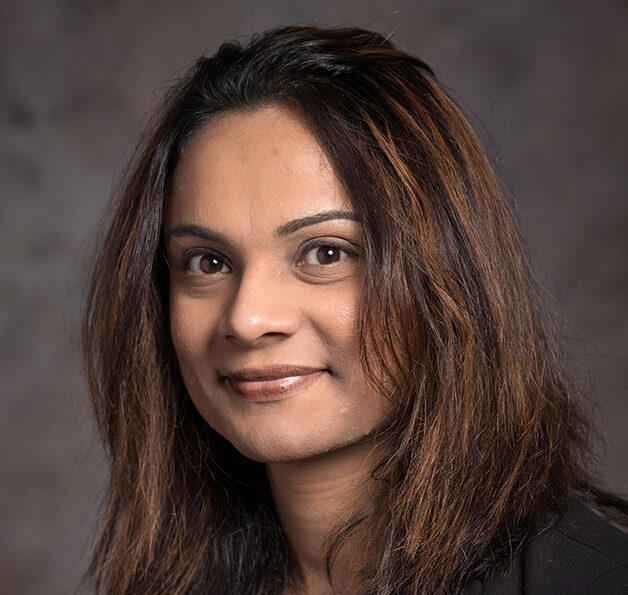Joanna Abraham helps prevent medical communication errors

Introduction
Structured tools can reduce “end-of-round time compression” during multidisciplinary morning rounds in the hospital, according to a new study.
Previous studies on multidisciplinary rounds, or MDRs, have demonstrated that the daily meeting of doctors, nurses, and other clinicians–used to coordinate patient care across disciplines and shifts–has positive effects on patient care and outcomes. But those studies have also shown that clinical staff spend less time discussing patients at the end of rounds compared to those presented at the beginning of rounds. In addition, data from the U.S. Agency for Healthcare Research and Quality show that approximately 70 percent of deaths caused by medical errors are related to communication breakdowns during handoffs.
To see if structured rounding tools might lessen these communications problems, University of Illinois at Chicago researchers tracked MDRs in a medical intensive care unit for two months to study two different paper-based communication rounding tools.
Their results are reported in JMIR Human Factors, a spin-off of the Journal of Medical Internet Research.
The goal was to test structured rounding tools and “evaluate if they improved equality in time allocation across patients and quality of patient care team communication,” said Joanna Abraham, assistant professor of biomedical and health information sciences in the UIC College of Applied Health Sciences.
“We audio-recorded rounding for a total of 82 patient cases and observed the sessions,” Abraham said. The patients were presented using one of two rounding tools — either one called SOAP, for Subjective, Objective, Assessment and Plan, or HAND-IT, a systems-oriented Handoff Intervention Tool.
Both were used to gather patient information before rounds and to support communication during rounds.
The researchers calculated the time spent discussing each patient and coded the recordings for communication breakdowns during rounds, which were defined as any failure in information transfer between the outgoing team to the on-coming team. Breakdowns were classified as missing or incomplete information; incorrect or conflicting information; or irrelevant or ambiguous information.
Results showed that time allocation per patient improved with use of either tool when compared to no tool, and that the difference between the two tools was not significant. Abraham and her colleagues also found that communication breakdowns increased with the amount of time spent discussing each patient—on average there were 1.04 additional breakdowns per every 120 seconds in discussion.
“This study shows that the use of structured rounding tools mitigates disproportionate time allocation and communication breakdowns during rounds,” Abraham said. “With the more structured HAND-IT tool, these effects were almost completely eliminated.
“Our results help to demonstrate the benefits of using structured rounding tools for reducing communication errors and improving patient care quality and safety. Although our results are preliminary, they present a strong case for further research into rounding communication,” she said.
Co-authors on the paper include Thomas Kannampallil of UIC, Vimla Patel of the New York Academy of Medicine, Dr. Bela Patel of the University of Texas Health Science Center, and Dr. Khalid Almoosa of Memorial Hermann Katy Hospital.
This research was supported in part by a Grant No. 220020152 from the James S McDonnell Foundation and by Grant No. 1 T32 HS017586-02 from the Keck Center AHRQ Training Program in Patient Safety and Quality on the Gulf Coast Consortia.